Variants in more than 271 different genes have been linked to hereditary retinal diseases, making comprehensive genomic approaches mandatory for accurate diagnosis.
We explored the genetic landscape of retinal disorders in consanguineous families from North-Western Pakistan, harboring a population of approximately 35 million inhabitants that remains relatively isolated and highly inbred (~50% consanguinity).
We leveraged on the high degree of consanguinity by applying genome-wide high-density single-nucleotide polymorphism (SNP) genotyping followed by targeted Sanger sequencing of candidate gene(s) lying inside autozygous intervals. In addition, we performed whole-exome sequencing (WES) on at least one proband per family.
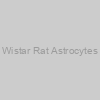 Wistar Rat Astrocytes |
|
ABC-TC4278 |
AcceGen |
1 vial |
Ask for price |
|
|
|
Description: Characterization: 1. Cell Activity;- Recovery Viability ≥ 80%.2. Cell Purity;- GFAP-positive cells ≥ 70%.- β-tubulin III- or doublecortin- (Dcx-) positive cells ≤ 10%.- GalC-positive cells ≤ 10%. |
 Human IPSC - Astrocytes |
|
IPS001 |
Neuromics |
each |
EUR 2484 |
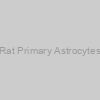 Rat Primary Astrocytes |
|
T4840 |
ABM |
5x10^5 cells / 1.0 ml |
EUR 975 |
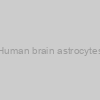 Human brain astrocytes |
|
HBMP202 |
Alphabioregen |
1ml frozen Vial |
EUR 620 |
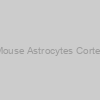 Mouse Astrocytes Cortex |
|
ABC-TC3914 |
AcceGen |
1 vial |
Ask for price |
|
|
|
Description: Different parts of the C57 mouse brain, including the cortex, hippocampus, and cerebellum, are dissociated enzymatically and mechanically into suspension of single cells. Next, the cells are seeded, and the astrocytes are enriched in vitro, using specific medium and cultural conditions. |
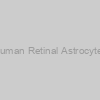 Human Retinal Astrocytes |
|
ABC-TC3787 |
AcceGen |
1 vial |
Ask for price |
|
|
|
Description: Astrocytes make up the majority of the cells in the mammalian brain. They are the most variable in type, most intimately associated with all parts of neurons, and thus most functionally interesting in their relationships with neurons. They provide structural, trophic, and metabolic support to neurons and modulate synaptic activity. Impairment of these astrocyte functions during stroke and other insults can critically influence neuron survival. Furthermore, astrocytes have been implicated in the pathological processes of many neurological diseases. Long-term recovery after brain injury, through neurite outgrowth, synaptic plasticity, or neuron regeneration, is influenced by astrocyte surface molecule expression and trophic factor release. In addition, the death or survival of astrocytes themselves may affect the ultimate clinical outcome. Recognition of the importance of astrocytes in nervous system functioning is increasing, specifically regarding the modulation of neural activity. Much of what we have learned about astrocytes is from the in vitro studies and astrocyte cultures are continuing to provide a useful tool in exploring the diverse property of these cells.HRA from Gentaur Research Laboratories are isolated from human retina. HRA are cryopreserved at passage one and delivered frozen. Each vial contains 5×10^5 cells in 1 ml volume. HRA are characterized by immunofluorescent method with antibody to GFAP. HRA are negative for HIV-1, HBV, HCV, mycoplasma, bacteria, yeast and fungi. HRA are guaranteed to further expand for 15 population doublings at the conditions provided by Gentaur Research Laboratories. |
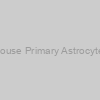 Mouse Primary Astrocytes |
|
T4540 |
ABM |
5x10^5 cells / 1.0 ml |
Ask for price |
 Human Retinal Astrocytes |
|
HBMP204 |
Alphabioregen |
1ml frozen Vial |
EUR 620 |
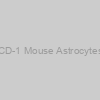 CD-1 Mouse Astrocytes |
|
ABC-TC3272 |
AcceGen |
1 vial |
Ask for price |
|
|
|
Description: Astrocytes are the majority cell type of the mammalian brain. Astrocytes have been implicated in a variety of supportive functions for their partner neurons in the CNS |
 Human Astrocytes-Midbrain |
|
ABC-TC3507 |
AcceGen |
1 vial |
Ask for price |
|
|
|
Description: Astrocytes make up the majority of the cells in the mammalian brain. They are the most variable in type, most intimately associated with all parts of neurons, and thus most functionally interesting in their relationships with neurons. They provide structural, trophic, and metabolic support to neurons and modulate synaptic activity. Impairment of these astrocyte functions during stroke and other insults can critically influence neuron survival. Furthermore, astrocytes have been implicated in the pathological processes of many neurological diseases. Long-term recovery after brain injury, through neurite outgrowth, synaptic plasticity, or neuron regeneration, is influenced by astrocyte surface molecule expression and trophic factor release. In addition, the death or survival of astrocytes themselves may affect the ultimate clinical outcome. Recognition of the importance of astrocytes in nervous system functioning is increasing, specifically regarding the modulation of neural activity. Much of what we have learned about astrocytes is from the in vitro studies and astrocyte cultures are continuing to provide a useful tool in exploring the diverse property of these cells.HA-mb from Gentaur Research Laboratories are isolated from human midbrain (mesencephalon). HA-mb are cryopreserved at passage one and delivered frozen. Each vial contains 5×10^5 cells in 1 ml volume. HA-mb are characterized by immunofluorescent method with antibody to GFAP. HA-mb are negative for HIV-1, HBV, HCV, mycoplasma, bacteria, yeast and fungi. HA-mb are guaranteed to further expand for 15 population doublings at the conditions provided by Gentaur Research Laboratories. |
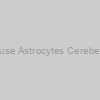 Mouse Astrocytes Cerebellar |
|
ABC-TC3913 |
AcceGen |
1 vial |
Ask for price |
|
|
|
Description: Different parts of the C57 mouse brain, including the cortex, hippocampus, and cerebellum, are dissociated enzymatically and mechanically into suspension of single cells. Next, the cells are seeded, and the astrocytes are enriched in vitro, using specific medium and cultural conditions. |
 Rat Astrocytes-cerebellar |
|
ABC-TC4078 |
AcceGen |
1 vial |
Ask for price |
|
|
|
Description: Astrocytes are the majority cell type of the mammalian brain. Astrocytes have been implicated in a variety of supportive functions for their partner neurons in the CNS, such as neuronal guidance during development |
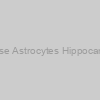 Mouse Astrocytes Hippocampal |
|
ABC-TC3915 |
AcceGen |
1 vial |
Ask for price |
|
|
|
Description: Different parts of the C57 mouse brain, including the cortex, hippocampus, and cerebellum, are dissociated enzymatically and mechanically into suspension of single cells. Next, the cells are seeded, and the astrocytes are enriched in vitro, using specific medium and cultural conditions. |
 Rat Astrocytes-hippocampal |
|
ABC-TC4079 |
AcceGen |
1 vial |
Ask for price |
|
|
|
Description: Astrocytes are the majority cell type of the mammalian brain. Astrocytes have been implicated in a variety of supportive functions for their partner neurons in the CNS, such as neuronal guidance during developmen |
 C57 Mouse Mixed Astrocytes |
|
ABC-TC3920 |
AcceGen |
1 vial |
Ask for price |
|
|
|
Description: Mouse Brain Mixed Astrocytes are obtained from C57 black or CD1 mouse brain, passaged once and prepared as cell suspensions for shipment. Each vial contains approximately 1 million cells. The astrocytes can be easily thawed and cultured. |
) Human Brain Astrocytes (HBA) |
|
HMP202 |
Neuromics |
500,000+ cells - Frozen |
EUR 1296 |
 SD Rat Cortical Astrocytes |
|
SCCAC-00001 |
Cyagen |
1*10^6/vial |
EUR 839 |
 RFP- Human Brain Astrocytes |
|
HBMP203 |
Alphabioregen |
1ml frozen Vial |
EUR 850 |
 Human Astrocytes-Cerebellar |
|
ABC-TC3505 |
AcceGen |
1 vial |
Ask for price |
|
|
|
Description: Astrocytes make up the majority of the cells in the mammalian brain. They are the most variable in type, most intimately associated with all parts of neurons, and thus most functionally interesting in their relationships with neurons. They provide structural, trophic, and metabolic support to neurons and modulate synaptic activity. Impairment of these astrocyte functions during stroke and other insults can critically influence neuron survival. Furthermore, astrocytes have been implicated in the pathological processes of many neurological diseases. Long-term recovery after brain injury, through neurite outgrowth, synaptic plasticity, or neuron regeneration, is influenced by astrocyte surface molecule expression and trophic factor release. In addition, the death or survival of astrocytes themselves may affect the ultimate clinical outcome. Recognition of the importance of astrocytes in nervous system functioning is increasing, specifically regarding the modulation of neural activity. Much of what we have learned about astrocytes is from the in vitro studies and astrocyte cultures are continuing to provide a useful tool in exploring the diverse property of these cells.HA-c from Gentaur Research Laboratories are isolated from human cerebellar. HA-c are cryopreserved at passage one and delivered frozen. Each vial contains 5×10^5 cells in 1 ml volume. HA-c are characterized by immunofluorescent method with antibody to GFAP. HA-c are negative for HIV-1, HBV, HCV, mycoplasma, bacteria, yeast and fungi. HA-c are guaranteed to further expand for 15 population doublings at the conditions provided by Gentaur Research Laboratories. |
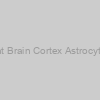 Rat Brain Cortex Astrocytes |
|
ABC-TC4090 |
AcceGen |
1 vial |
Ask for price |
|
|
|
Description: Rat Brain Cortex Astrocytes are obtained from rat brain, passaged once and prepared as cell suspensions for shipment on dry ice. Each vial contains approximately 1 million cells. Astrocytes can be easily thawed and cultured. |
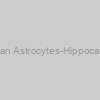 Human Astrocytes-Hippocampal |
|
ABC-TC3506 |
AcceGen |
1 vial |
Ask for price |
|
|
|
Description: Astrocytes make up the majority of the cells in the mammalian brain. They are the most variable in type, most intimately associated with all parts of neurons, and thus most functionally interesting in their relationships with neurons. They provide structural, trophic, and metabolic support to neurons and modulate synaptic activity. Impairment of these astrocyte functions during stroke and other insults can critically influence neuron survival. Furthermore, astrocytes have been implicated in the pathological processes of many neurological diseases. Long-term recovery after brain injury, through neurite outgrowth, synaptic plasticity, or neuron regeneration, is influenced by astrocyte surface molecule expression and trophic factor release. In addition, the death or survival of astrocytes themselves may affect the ultimate clinical outcome. Recognition of the importance of astrocytes in nervous system functioning is increasing, specifically regarding the modulation of neural activity. Much of what we have learned about astrocytes is from the in vitro studies and astrocyte cultures are continuing to provide a useful tool in exploring the diverse property of these cells.HA-h from Gentaur Research Laboratories are isolated from human brain hippocampal tissue. HA-h are cryopreserved at passage one and delivered frozen. Each vial contains 5×10^5 cells in 1 ml volume. HA-h are characterized by immunofluorescent method with antibody to GFAP. HA-h are negative for HIV-1, HBV, HCV, mycoplasma, bacteria, yeast and fungi. HA-h are guaranteed to further expand for 15 population doublings at the conditions provided by Gentaur Research Laboratories. |
 GFP-Human Brain Astrocytes |
|
ABC-FC0038 |
AcceGen |
1 vial |
Ask for price |
|
|
|
Description: HBAs are isolated from normal human brain cortical tissue. GFP-HBAs are selected from puromycin resistant HBAs after infected with GFP Expressing lentiviral particles. The cells are shipped in frozen vials (the cells are provided @ passage 3). Astrocytes Growth Medium is recommended for cell culture and these cells have a minimum average population doubling levels 8 when cultured following the detailed protocol described below. |
 F344 Rat Cortical Astrocytes |
|
FCCAC-00001 |
Cyagen |
1*10^6/vial |
EUR 839 |
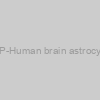 GFP-Human brain astrocytes |
|
HBMP201 |
Alphabioregen |
1ml frozen Vial |
EUR 850 |
 Human Astrocytes-Brain Stem |
|
ABC-TC3504 |
AcceGen |
1 vial |
Ask for price |
|
|
|
Description: Astrocytes make up the majority of the cells in the mammalian brain. They are the most variable in type, most intimately associated with all parts of neurons, and thus most functionally interesting in their relationships with neurons. They provide structural, trophic, and metabolic support to neurons and modulate synaptic activity. Impairment of these astrocyte functions during stroke and other insults can critically influence neuron survival. Furthermore, astrocytes have been implicated in the pathological processes of many neurological diseases. Long-term recovery after brain injury, through neurite outgrowth, synaptic plasticity, or neuron regeneration, is influenced by astrocyte surface molecule expression and trophic factor release. In addition, the death or survival of astrocytes themselves may affect the ultimate clinical outcome. Recognition of the importance of astrocytes in nervous system functioning is increasing, specifically regarding the modulation of neural activity. Much of what we have learned about astrocytes is from the in vitro studies and astrocyte cultures are continuing to provide a useful tool in exploring the diverse property of these cells.HA-bs from Gentaur Research Laboratories are isolated from human brain stem. HA-bs are cryopreserved at passage one and delivered frozen. Each vial contains 5×10^5 cells in 1 ml volume. HA-bs are characterized by immunofluorescent method with antibody to GFAP. HA-bs are negative for HIV-1, HBV, HCV, mycoplasma, bacteria, yeast and fungi. HA-bs are guaranteed to further expand for 15 population doublings at the conditions provided by Gentaur Research Laboratories. |
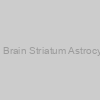 Rat Brain Striatum Astrocytes |
|
ABC-TC4098 |
AcceGen |
1 vial |
Ask for price |
|
|
|
Description: Rat Brain Striatum Astrocytes are obtained from rat brain, passaged once and prepared as cell suspensions for shipment on dry ice. Each vial contains approximately 1 million cells. Astrocytes can be easily thawed and cultured. |
 Human Astrocytes-Spinal Cord |
|
ABC-TC3508 |
AcceGen |
1 vial |
Ask for price |
|
|
|
Description: Astrocytes make up the majority of the cells in the mammalian brain. They are the most variable in type, most intimately associated with all parts of neurons, and thus most functionally interesting in their relationships with neurons. They provide structural, trophic, and metabolic support to neurons and modulate synaptic activity. Impairment of these astrocyte functions during stroke and other insults can critically influence neuron survival. Furthermore, astrocytes have been implicated in the pathological processes of many neurological diseases. Long-term recovery after brain injury, through neurite outgrowth, synaptic plasticity, or neuron regeneration, is influenced by astrocyte surface molecule expression and trophic factor release. In addition, the death or survival of astrocytes themselves may affect the ultimate clinical outcome. Recognition of the importance of astrocytes in nervous system functioning is increasing, specifically regarding the modulation of neural activity. Much of what we have learned about astrocytes is from the in vitro studies and astrocyte cultures are continuing to provide a useful tool in exploring the diverse property of these cells.HA-sp from Gentaur Research Laboratories are isolated from human spinal cord. HA-sp are cryopreserved at passage one and delivered frozen. Each vial contains 5×10^5 cells in 1 ml volume. HA-sp are characterized by immunofluorescent method with antibody to GFAP. HA-sp are negative for HIV-1, HBV, HCV, mycoplasma, bacteria, yeast and fungi. HA-sp are guaranteed to further expand for 15 population doublings at the conditions provided by Gentaur Research Laboratories. |
 Human Primary Astrocytes, fetal |
|
T4033 |
ABM |
5x10^5 cells / 1.0 ml |
EUR 1375 |
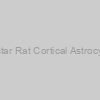 Wistar Rat Cortical Astrocytes |
|
WCCAC-00001 |
Cyagen |
1*10^6/vial |
EUR 839 |
 Human iPSC-derived Astrocytes |
|
CSC-00836L |
Creative Bioarray |
One Frozen vial |
Ask for price |
|
|
 Rat Astrocytes) Fischer 344 (F344) Rat Astrocytes |
|
ABC-TC3428 |
AcceGen |
1 vial |
Ask for price |
|
|
|
Description: Characterization: 1. Cell Activity; Recovery Viability ≥ 80%. 2. Cell Purity; - GFAP-positive cell percentage ≥ 70%. - β-tubulin III- or doublecortin- (Dcx-) positive cell percentage ≤ 10%. - GalC-positive cell percentage ≤ 10%. |
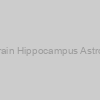 Rat Brain Hippocampus Astrocytes |
|
ABC-TC4094 |
AcceGen |
1 vial |
Ask for price |
|
|
|
Description: Rat Brain Hippocampus Astrocytes are obtained from rat brain, passaged once and prepared as cell suspensions for shipment on dry ice. Each vial contains approximately 1 million cells. Astrocytes can be easily thawed and cultured. |
) Primary Rat Brain Astrocytes (BA) |
|
CSI011Ra01 |
Cloud-Clone |
5X10^5 |
EUR 960 |
|
|
 Rat Astrocytes) Sprague-Dawly (SD) Rat Astrocytes |
|
ABC-TC4259 |
AcceGen |
1 vial |
Ask for price |
|
|
|
Description: Characterization: 1. Cell Activity;- Recovery Viability ≥ 80%.2. Cell Purity;- GFAP-positive cells ≥ 70%.- β-tubulin III- or doublecortin- (Dcx-) positive cells ≤ 10%.- GalC-positive cells ≤ 10%. |
) Primary Mouse Brain Astrocytes (BA) |
|
CSI011Mu01 |
Cloud-Clone |
5X10^5 |
EUR 890 |
|
|
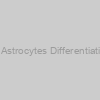 iPSC Astrocytes Differentiation kit |
|
CSK-IC010 |
Creative Bioarray |
One Kit |
Ask for price |
|
|
 Immortalized Human Astrocytes-SV40T |
|
CSC-C12025Z |
Creative Bioarray |
One Frozen vial |
Ask for price |
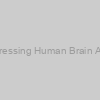 GFP Expressing Human Brain Astrocytes |
|
HMP201 |
Neuromics |
500,000 Cells - Frozen |
EUR 1624.8 |
 GFP Expressing Human Brain Astrocytes |
|
cAP-0031GFP |
Angio Proteomie |
1Frozen Vial |
EUR 782.1 |
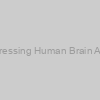 RFP Expressing Human Brain Astrocytes |
|
cAP-0031RFP |
Angio Proteomie |
1Frozen Vial |
EUR 782.1 |
 Rat Brain Cx-Hi-Cp Mix Astrocytes |
|
ABC-TC4092 |
AcceGen |
1 vial |
Ask for price |
|
|
|
Description: Rat Brain Cx-Hi-Cp Mix Astrocytes are obtained from rat brain, passaged once and prepared as cell suspensions for shipment on dry ice. Each vial contains approximately 1 million cells. Astrocytes can be easily thawed and cultured. |
 Immortalized Human Astrocytes, fetal - SV40 |
|
T0280 |
ABM |
1x106 cells / 1.0 ml |
EUR 3950 |
) Immortalized Mouse Astrocytes - SV40T (IMA2.1) |
|
T0289 |
ABM |
1x106 cells / 1.0 ml |
EUR 3950 |
 Immortalized Human Astrocytes, fetal - hTERT |
|
T0281 |
ABM |
1x106 cells / 1.0 ml |
EUR 3950 |
 HighQC™ Human IPSC-Derived Astrocytes |
|
ABC-SC2111 |
AcceGen |
1 vial |
Ask for price |
|
Description: These are derived from integration-free, induced pluripotent stem cells (iPSCs) under fully defined growth conditions using a completely reproducible process to enable researchers to gain further insight into the mechanisms that govern CNS development, disease onset and drug response. |
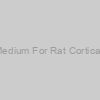 Complete Medium For Rat Cortical Astrocytes |
|
RAXAC-90011 |
Cyagen |
500mL |
EUR 250 |
 Rat Brain PrimaCell7: Normal Nerve Astrocytes |
|
2-82518 |
CHI Scientific |
1 Kit |
Ask for price |
) Astrocytes Mature (iPSC from Blood Cells; Male) |
|
ASE-9322M |
Applied StemCell |
1 vial (1 x 10^6) |
EUR 546 |
|
Description: 12 month |
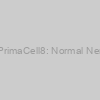 Mouse Brain PrimaCell8: Normal Nerve Astrocytes |
|
2-82017 |
CHI Scientific |
1 Kit |
Ask for price |
 Human Brain PrimaCell8: Normal Nerve Astrocytes |
|
2-96020 |
CHI Scientific |
1 Kit |
Ask for price |
) Astrocytes Mature (iPSC from Blood Cells; Female) |
|
ASE-9322MF |
Applied StemCell |
1 vial (1 x 10^6) |
EUR 546 |
|
Description: 12 month |
) Immortalized Human Adult Brain Astrocytes (AST-1) |
|
T0783 |
ABM |
1x10^6 cells / 1.0 ml |
EUR 3950 |
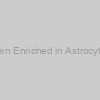 Phosphoprotein Enriched in Astrocytes 15 Protein |
|
20-abx262863 |
Abbexa |
-
Ask for price
-
Ask for price
-
Ask for price
|
|
|
|
 Phosphoprotein Enriched in Astrocytes 15 Protein |
|
abx262863-10mg |
Abbexa |
10 mg |
EUR 325 |
 Phosphoprotein Enriched in Astrocytes 15 Protein |
|
abx262863-25mg |
Abbexa |
25 mg |
EUR 6575 |
 Phosphoprotein Enriched in Astrocytes 15 Protein |
|
abx262863-5mg |
Abbexa |
5 mg |
EUR 225 |
) Astrocytes Precursors (iPSC from Blood Cells; Male) |
|
ASE-9322P |
Applied StemCell |
1 vial (1 x 10^6) |
EUR 448.8 |
|
Description: 12 month |
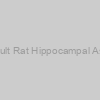 Immortalized Adult Rat Hippocampal Astrocytes - SV40 |
|
T9202 |
ABM |
1x10^6 cells / 1.0 ml |
EUR 3950 |
) Astrocytes Precursors (iPSC from Blood Cells; Female) |
|
ASE-9322PF |
Applied StemCell |
1 vial (1 x 10^6) |
EUR 448.8 |
|
Description: 12 month |
 Complete Medium For Mouse Cortical Astrocytes Culture |
|
MUXAC-90011 |
Cyagen |
500mL |
EUR 250 |
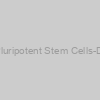 Human Induced Pluripotent Stem Cells-Derived Astrocytes |
|
cAP-0500-002-03 |
Angio Proteomie |
1Frozen Vial |
EUR 742.5 |
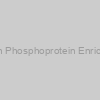 Recombinant Human Phosphoprotein Enriched in Astrocytes 15 |
|
7-05845 |
CHI Scientific |
2µg |
Ask for price |
 Recombinant Human Phosphoprotein Enriched in Astrocytes 15 |
|
7-05846 |
CHI Scientific |
10µg |
Ask for price |
 Recombinant Human Phosphoprotein Enriched in Astrocytes 15 |
|
7-05847 |
CHI Scientific |
1mg |
Ask for price |
 Phosphoprotein Enriched in Astrocytes 15 Human Recombinant |
|
rAP-4440 |
Angio Proteomie |
Inquiry |
Ask for price |
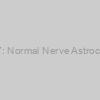 Rat Brain PrimaCell7: Normal Nerve Astrocytes Growth Medium |
|
9-25018 |
CHI Scientific |
5 x 100 ml |
Ask for price |
 Mouse Brain PrimaCell8: Normal Nerve Astrocytes Growth Medium |
|
9-32017 |
CHI Scientific |
5 x 100 ml |
Ask for price |
 Human Brain PrimaCell8: Normal Nerve Astrocytes Growth Medium |
|
9-46020 |
CHI Scientific |
5 x 100 ml |
Ask for price |
) Astrocytes Precursors Starter Kit (iPSC from Blood Cells; Male) |
|
ASE-9322PK |
Applied StemCell |
1 Kit |
EUR 497.4 |
|
Description: 12 month |
 Rat Brain Tissue Preparation Buffer 7: Normal Nerve Astrocytes |
|
9-80225 |
CHI Scientific |
1 x 100 ml |
Ask for price |
) Astrocytes Precursors Starter Kit (iPSC from Blood Cells; Female) |
|
ASE-9322PKF |
Applied StemCell |
1 Kit |
EUR 497.4 |
|
Description: 12 month |
 Human Brain Tissue Preparation Buffer 8: Normal Nerve Astrocytes |
|
9-80020 |
CHI Scientific |
1 x 100 ml |
Ask for price |
 Mouse Brain Tissue Preparation Buffer 8: Normal Nerve Astrocytes |
|
9-80131 |
CHI Scientific |
1 x 100 ml |
Ask for price |
-Human phosphoprotein enriched in astrocytes 15 (PEA15)) PEA15 (untagged)-Human phosphoprotein enriched in astrocytes 15 (PEA15) |
|
SC108132 |
Origene Technologies GmbH |
10 µg |
Ask for price |
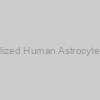 Cas9 Expressing Immortalized Human Astrocytes, Fetal - hTERT Cell Line |
|
T3452 |
ABM |
1x10^6 cells / 1.0 ml |
EUR 3950 |
 - Human phosphoprotein enriched in astrocytes 15 (PEA15)) PEA15 (GFP-tagged) - Human phosphoprotein enriched in astrocytes 15 (PEA15) |
|
RG205507 |
Origene Technologies GmbH |
10 µg |
Ask for price |
 PEA15 Phosphoprotein Enriched in Astrocytes 15 Human Recombinant Protein |
|
PROTQ15121 |
BosterBio |
Regular: 10ug |
EUR 380.4 |
|
Description: PEA15 Human Recombinant produced in E.Coli is a single, non-glycosylated, polypeptide chain containing 130 amino acids (1-130 a.a.) and having a molecular mass of 15kDa.;The PEA15 is purified by proprietary chromatographic techniques. |
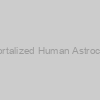 GFP Stably Expressing Immortalized Human Astrocytes, Fetal - hTERT Cell Line |
|
T3962 |
ABM |
1x10^6 cells / 1.0 ml |
EUR 3950 |
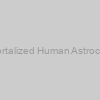 RFP Stably Expressing Immortalized Human Astrocytes, Fetal - hTERT Cell Line |
|
T3972 |
ABM |
1x10^6 cells / 1.0 ml |
EUR 3950 |
-Human phosphoprotein enriched in astrocytes 15 (PEA15)) PEA15 (Myc-DDK-tagged)-Human phosphoprotein enriched in astrocytes 15 (PEA15) |
|
RC205507 |
Origene Technologies GmbH |
10 µg |
Ask for price |
 - Rat phosphoprotein enriched in astrocytes 15A (Pea15a), (10 ug)) Pea15 (untagged ORF) - Rat phosphoprotein enriched in astrocytes 15A (Pea15a), (10 ug) |
|
RN204927 |
Origene Technologies GmbH |
10 µg |
Ask for price |
, mGFP tagged) Lenti ORF clone of Human phosphoprotein enriched in astrocytes 15 (PEA15), mGFP tagged |
|
RC205507L2 |
Origene Technologies GmbH |
10 µg |
Ask for price |
, mGFP tagged) Lenti ORF clone of Human phosphoprotein enriched in astrocytes 15 (PEA15), mGFP tagged |
|
RC205507L4 |
Origene Technologies GmbH |
10 µg |
Ask for price |
 - Rat phosphoprotein enriched in astrocytes 15A (Pea15a), (10 ug)) Pea15 (Myc-DDK-tagged ORF) - Rat phosphoprotein enriched in astrocytes 15A (Pea15a), (10 ug) |
|
RR204927 |
Origene Technologies GmbH |
10 µg |
Ask for price |
, Myc-DDK-tagged) Lenti ORF clone of Human phosphoprotein enriched in astrocytes 15 (PEA15), Myc-DDK-tagged |
|
RC205507L1 |
Origene Technologies GmbH |
10 µg |
Ask for price |
, Myc-DDK-tagged) Lenti ORF clone of Human phosphoprotein enriched in astrocytes 15 (PEA15), Myc-DDK-tagged |
|
RC205507L3 |
Origene Technologies GmbH |
10 µg |
Ask for price |
 for miRNA target validation) 3`UTR clone of phosphoprotein enriched in astrocytes 15 (PEA15) for miRNA target validation |
|
SC216908 |
Origene Technologies GmbH |
10 µg |
Ask for price |
 - Human phosphoprotein enriched in astrocytes 15 (PEA15), transcript variant 4) PEA15 (untagged) - Human phosphoprotein enriched in astrocytes 15 (PEA15), transcript variant 4 |
|
SC333563 |
Origene Technologies GmbH |
10 µg |
Ask for price |
 - Human phosphoprotein enriched in astrocytes 15 (PEA15), transcript variant 3) PEA15 (untagged) - Human phosphoprotein enriched in astrocytes 15 (PEA15), transcript variant 3 |
|
SC333781 |
Origene Technologies GmbH |
10 µg |
Ask for price |
 - Human phosphoprotein enriched in astrocytes 15 (PEA15), transcript variant 1) PEA15 (untagged) - Human phosphoprotein enriched in astrocytes 15 (PEA15), transcript variant 1 |
|
SC333979 |
Origene Technologies GmbH |
10 µg |
Ask for price |
) Rat Brain PrimaCell7: Normal Nerve Astrocytes Growth Supplements with Serum (for 500 ml medium) |
|
9-26018 |
CHI Scientific |
1 Set |
Ask for price |
) Mouse Brain PrimaCell8: Normal Nerve Astrocytes Growth Supplements with Serum (for 500 ml medium) |
|
9-33017 |
CHI Scientific |
1 Set |
Ask for price |
) Human Brain PrimaCell8: Normal Nerve Astrocytes Growth Supplements with Serum (for 500 ml medium) |
|
9-47020 |
CHI Scientific |
1 Set |
Ask for price |
 - Mouse phosphoprotein enriched in astrocytes 15A (cDNA clone MGC:47406 IMAGE:4500957), (10ug)) Pea15a (untagged) - Mouse phosphoprotein enriched in astrocytes 15A (cDNA clone MGC:47406 IMAGE:4500957), (10ug) |
|
MC206379 |
Origene Technologies GmbH |
10 µg |
Ask for price |
 - Mouse phosphoprotein enriched in astrocytes 15A (Pea15a), transcript variant 2) Pea15a (GFP-tagged) - Mouse phosphoprotein enriched in astrocytes 15A (Pea15a), transcript variant 2 |
|
MG200734 |
Origene Technologies GmbH |
10 µg |
Ask for price |
 - Human phosphoprotein enriched in astrocytes 15 (PEA15), transcript variant 4) PEA15 (myc-DDK-tagged) - Human phosphoprotein enriched in astrocytes 15 (PEA15), transcript variant 4 |
|
RC235669 |
Origene Technologies GmbH |
10 µg |
Ask for price |
 - Human phosphoprotein enriched in astrocytes 15 (PEA15), transcript variant 3) PEA15 (myc-DDK-tagged) - Human phosphoprotein enriched in astrocytes 15 (PEA15), transcript variant 3 |
|
RC235887 |
Origene Technologies GmbH |
10 µg |
Ask for price |
 - Human phosphoprotein enriched in astrocytes 15 (PEA15), transcript variant 1) PEA15 (myc-DDK-tagged) - Human phosphoprotein enriched in astrocytes 15 (PEA15), transcript variant 1 |
|
RC236085 |
Origene Technologies GmbH |
10 µg |
Ask for price |
 - Rat phosphoprotein enriched in astrocytes 15A (Pea15a), (10 ug)) Lenti ORF clone of Pea15 (mGFP-tagged ORF) - Rat phosphoprotein enriched in astrocytes 15A (Pea15a), (10 ug) |
|
RR204927L4 |
Origene Technologies GmbH |
10 µg |
Ask for price |
 - Mouse phosphoprotein enriched in astrocytes 15A (Pea15a), transcript variant 2) Pea15a (Myc-DDK-tagged) - Mouse phosphoprotein enriched in astrocytes 15A (Pea15a), transcript variant 2 |
|
MR200734 |
Origene Technologies GmbH |
10 µg |
Ask for price |
 - Rat phosphoprotein enriched in astrocytes 15A (Pea15a), (10 ug)) Lenti ORF clone of Pea15 (Myc-DDK-tagged ORF) - Rat phosphoprotein enriched in astrocytes 15A (Pea15a), (10 ug) |
|
RR204927L3 |
Origene Technologies GmbH |
10 µg |
Ask for price |
 - Human phosphoprotein enriched in astrocytes 15 (PEA15), 200ul, >10^7 TU/mL) Lenti ORF particles, PEA15 (mGFP-tagged) - Human phosphoprotein enriched in astrocytes 15 (PEA15), 200ul, >10^7 TU/mL |
|
RC205507L2V |
Origene Technologies GmbH |
200 µl |
Ask for price |
 - Human phosphoprotein enriched in astrocytes 15 (PEA15), 200ul, >10^7 TU/mL) Lenti ORF particles, PEA15 (mGFP-tagged) - Human phosphoprotein enriched in astrocytes 15 (PEA15), 200ul, >10^7 TU/mL |
|
RC205507L4V |
Origene Technologies GmbH |
200 µl |
Ask for price |
, Mouse and Rat) Brain Dissociation System 1 (Astrocytes, Glial, Cerebral cortices, Germinal matrix, Hippocampi, Neural), Mouse and Rat |
|
4-20221 |
CHI Scientific |
ea |
Ask for price |
 - Human phosphoprotein enriched in astrocytes 15 (PEA15), 200ul, >10^7 TU/mL) Lenti ORF particles, PEA15 (Myc-DDK tagged) - Human phosphoprotein enriched in astrocytes 15 (PEA15), 200ul, >10^7 TU/mL |
|
RC205507L1V |
Origene Technologies GmbH |
200 µl |
Ask for price |
 - Human phosphoprotein enriched in astrocytes 15 (PEA15), 200ul, >10^7 TU/mL) Lenti ORF particles, PEA15 (Myc-DDK tagged) - Human phosphoprotein enriched in astrocytes 15 (PEA15), 200ul, >10^7 TU/mL |
|
RC205507L3V |
Origene Technologies GmbH |
200 µl |
Ask for price |
We identified 7 known and 4 novel variants in a total of 10 genes (ABCA4, BBS2, CNGA1, CNGA3, CNGB3, MKKS, NMNAT1, PDE6B, RPE65, and TULP1) previously known to cause inherited retinal diseases. In spite of all families being consanguineous, compound heterozygosity was detected in one family.
All homozygous pathogenic variants resided in autozygous intervals ≥2.0 Mb in size. Putative founder variants were observed in the ABCA4 (NM_000350.2:c.214G>A; p.Gly72Arg; ten families) and NMNAT1 genes (NM_022787.3:c.25G>A; p.Val9Met; two families). We conclude that geographic isolation and sociocultural tradition of intrafamilial mating in North-Western Pakistan favor both the clinical manifestation of rare “generic” variants and the prevalence of founder mutations.
